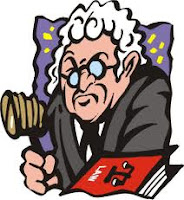On Sight Reading
 There is really no such thing as "sight reading." Sight reading consists of learning to recognize already familiar patterns that are put together in different ways, very much like the way letters are put together to form words. This sounds like evasion, I know, but if you consider the topic with this idea in mind, you will conclude that the best way to learn to sight read well is to do it on a regular basis.
There is really no such thing as "sight reading." Sight reading consists of learning to recognize already familiar patterns that are put together in different ways, very much like the way letters are put together to form words. This sounds like evasion, I know, but if you consider the topic with this idea in mind, you will conclude that the best way to learn to sight read well is to do it on a regular basis.I know this is how I developed my reading skills. From my first piano book, The Adult at the Piano, I was armed with the ability to associate note-heads with keys of the piano and I was off and running through any literature I could get my hands on. And incidentally, being a fluent sight-reader will open many doors, sometimes lucrative ones.
There are sight reading exercises available that approach the topic in this way, gradually increasing the types of figures that are combined. But I've concluded that that approach is too dry and a-musical. It's best to have available some pieces that are several levels easier than what one can actually play.
Some procedures:
 1. Scan the piece before playing, noticing the composer's directions and any oddities, i.e., accidentals, tempo changes, etc.
1. Scan the piece before playing, noticing the composer's directions and any oddities, i.e., accidentals, tempo changes, etc.2. Think of a tempo that should work for the quickest passages.
 3. Set that tempo and don't stop for anything. If you have trouble, go to the next beat or next measure, but keep the pulse going. Teacher/student duets are great for this and there are many such collections: Diabelli Op. 149 & Op. 163; Four Centuries of Piano Duet Music by Cameron McGraw in four volumes and graded for difficulty. These are not transcriptions, but rather original pieces for piano duet.
3. Set that tempo and don't stop for anything. If you have trouble, go to the next beat or next measure, but keep the pulse going. Teacher/student duets are great for this and there are many such collections: Diabelli Op. 149 & Op. 163; Four Centuries of Piano Duet Music by Cameron McGraw in four volumes and graded for difficulty. These are not transcriptions, but rather original pieces for piano duet.4. Make a conscious decision from the start to try to notice all musical directions in the score: dynamics, articulation, etc.

5. Keep eyes on the music; not on the hands.
6. Always look ahead in the score, not at what has just been played.
7. No mental judgements while playing. A post mortem afterwards, if you must.
8. Keep in mind that the objective is to make music, not just rattle off notes.

No comments:
Post a Comment